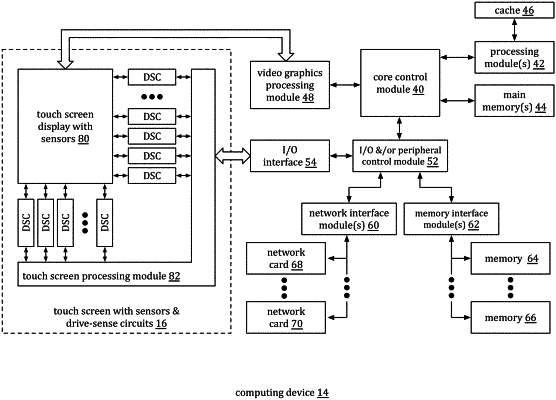| CPC G05F 1/10 (2013.01) [G01R 19/2513 (2013.01); G06F 1/263 (2013.01); G06F 1/3262 (2013.01); G06F 3/0416 (2013.01)] | 20 Claims |

|
1. A cascaded drive-sense circuit (DSC) load network system, the system comprising:
a power supply operably coupled to a first drive-sense circuit (DSC), wherein, when enabled, the power supply configured to provide a first power signal to the DSC;
the first DSC operably coupled to the power supply, wherein, when enabled based on the first power signal, the first DSC configured to:
receive the first power signal from the power supply;
generate a second power signal based on a first reference signal;
provide the second power signal via a first single line that couples to a coupling of a first load and a second DSC and simultaneously sense change of the second power signal via the first single line based on a first electrical characteristic of the first load; and
generate a first digital signal that is based on the first electrical characteristic of the first load; and
the second DSC operably coupled to the first DSC, wherein, when enabled based on the second power signal, the second DSC configured to:
receive the second power signal from the first DSC;
generate a third power signal based on a second reference signal;
provide the third power signal via a second single line that couples to a second load and simultaneously sense change of the third power signal via the second single line based on a second electrical characteristic of the second load; and
generate a second digital signal that is based on the second electrical characteristic of the second load.
|